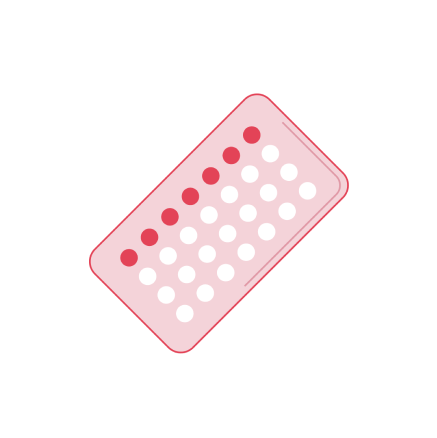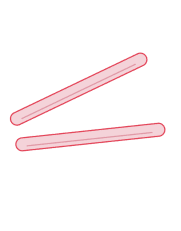There are two types of contraceptive pill. The Combined Pill contains two hormones similar to those produced naturally by the body; progestogen and oestrogen. The Progestogen Only Pill, also known as the “mini pill” contains only progestogen.

There are two types of ‘pill’ – the combined pill and progesterone only pill, that prevent pregnancy.
The combined pill works to prevent the sperm reaching the egg and fertilising it. It prevents pregnancy by interrupting this process in three ways:

The POP pill works by preventing the sperm reaching an egg and fertilising it. It interrupts the process in two ways:

The pill needs to be given by a nurse, midwife or doctor who has been specially trained. Visit your local doctor or nurse or speak with your midwife to find out more. There may be a charge for your appointment and the prescription, so make sure to ask when you get in touch. Cerazette is currently not funded in New Zealand.
There is a guideline (2019) that confirms it is safe to take the combined pill continuously without a seven day break – take the 21 hormone pills, then start a new packet straight away. This means missing the non-hormone pills and skipping your period. This is the most effective way to take the combined pill.
The progesterone only pill should be taken every day with no break in between packs.
For all pills:
Combined Pill: If you start within the first five days of your period, you’re protected right away. If your periods are short (23 days or less), start in the first four days for immediate protection (since you might ovulate early). If you start at other times, use extra protection like condoms for the first seven pill days.
Progesterone-Only Pill: If you start within the first five days of your period, you’re protected right away. If you have short periods (23 days or less) and start after the fifth day, use extra protection like condoms for the first two days. If you start at other times, it takes two days to work, so use condoms for two days.
An appointment will typically include:
The short answer is yes—there’s no reason to take a break from the pill unless you’ve decided you want to get pregnant.
There’s been lots of research on contraception pills over the years and the consensus is that long-term use doesn’t affect your ability to get pregnant once you stop taking the pill. It’s always a good idea to stay current on your annual health exams, whether you use the pill or another method. Our health changes over time, and some changes like rising blood pressure or worse migraines may make it risky to use methods with estrogen.
The contraceptive pill increases the risk of blood clots, but for most people this risk is tiny. It is important to have a thorough assessment with your health provider to make sure the pill is the right choice and safe for you.
The risks of blood clots (Deep Vein Thrombosis DVT) are low for most people, but they can happen for women/wāhine+ when they are not using oral contraceptives. For every 10,000 women aged 15-44 who are not taking the pill, approximately 1-2 will develop a blood clot in one year.
Taking a combined oral contraceptive pill increases this very small risk of developing a clot between 3x and 8x depending on the type of pill. (There is a 10x increase of developing a clot during pregnancy). If a close family member gets a blood clot, tell your health provider as this may increase your chance of a blood clot.
If you are using a progestogen-only pill, you are at little or no increased risk of blood clots.

Note: Wāhine/women+ includes consideration of whānau and social context and is intended to be inclusive of gender diverse people who share some of the health needs of women but do not identify as women. (RANZCOG, 2022)
The development of this website was supported with an educational grant from Bayer.
Copyright © Protected&Proud. All Rights Reserved.
A non-hormonal (Copper) IUD is a small, T-shaped plastic device which contains copper. It is put into the uterus (womb). A Copper IUD does not contain hormones. The copper IUD can also be used as an Emergency Contraception.
LASTS FROM 5 TO 10 YEARS | PLACED IN THE UTERUS | EFFECTIVE IMMEDIATELY | EMERGENCY CONTRACEPTION – UP TO 5 DAYS AFTER SEX
A Hormonal IUD is a small, T-shaped plastic device, which contains the hormone progestogen to control your fertility. The device is put into the uterus (womb).
HORMONES | LASTS FROM 3 TO 5 YEARS | PLACED IN THE UTERUS | EFFECTIVE IN 7 DAYS

Two small, flexible plastic rods that are placed just under the skin in the upper arm. The implant releases the hormone progestogen to control fertility.
HORMONES | LASTS UP TO 5 YEARS | PLACED IN THE ARM | EFFECTIVE IN 7 DAYS